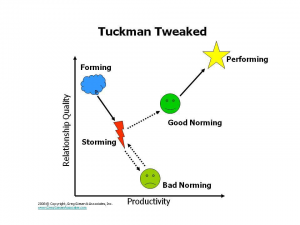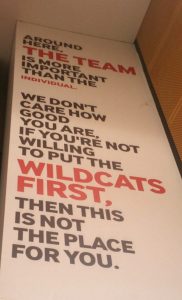What is your attitude to coaching? Some managers coach and some don’t. Leaders who don’t are not necessarily bad managers, but they are missing out on an effective tool to develop talent.
The Harvard Business Review researched managers who coach and what distinguishes them. What stood out in their interviews with hundreds of managers who do coach their direct reports is their mindset.
‘They believe in the value of coaching, and they think about their role as a manager in a way that makes coaching a natural part of their managerial toolkit. These are not professional coaches. They are line and staff leaders who manage a group of individuals, and they are busy, hard-working people’.
So why do they so readily give coaching an important place in their schedule?
Here are four reasons:
1. They see coaching as an essential tool for achieving business goals. They are not coaching their people because they are nice — they see personal involvement in the development of talent as an essential activity for business success. Most managers will tell you that they don’t have the time to coach. However, time isn’t a problem if you think coaching is a “must have” rather than a “nice to have.” Whether it’s because they are competing for talent, operating in a highly turbulent market place, trying to retain their budding leaders, or aiming to grow their solid players, they believe that they simply have to take the time to coach.
2. They enjoy helping people develop. These managers are not unlike artists who look at material and imagine that something better, more interesting, and more valuable could emerge. They assume that the people who work for them don’t necessarily show up ready to do the job, but that they will need to learn and grow to fulfill their role and adapt to changing circumstances. Coaching managers see this as an essential part of their job. They believe that those with the highest potential, who can often contribute the most to a business, will need their help to realise their often-lofty ambitions.
3. They are curious. Coaching managers ask a lot of questions. They are genuinely interested in finding out more about how things are going, what kinds of problems people are running into, where the gaps and opportunities are, and what needs to be done better. Typically, they don’t need to be taught how to ask questions because it’s a natural strength. This curiosity facilitates the coaching dialogue, the give-and-take between coach and learner in which the learner freely shares his or her perceptions, doubts, mistakes, and successes so that they together reflect on what’s happening.
4. They are interested in establishing connections. This empathy allows the coaching manager to build an understanding of what each employee needs and appropriately adjust his or her style. Some employees might come to coaching with a “Give it to me straight, I can take it” attitude. Others need time to think and come to their own conclusions. A trusting, connected relationship helps managers better gauge which approach to take. And coaching managers don’t put too much stock in the hierarchy.
Achieving this mindset is doable. It comes down to whether the business case is sufficiently compelling to motivate a manager to develop a coaching mindset. Managers need to ask themselves a few questions: Does your organization (or group or team) have the talent it needs to compete? If not, why not? Does your hiring process give you the talent your business/ organisation requires? One way to answer that is to check if your people are performing to their potential to take your business/ organisation to its highest potential. If you are not getting these results then it may be worth reviewing how you are bringing in and developing your most important resource – your people….
For managers who want to start coaching, one of the first steps is to get very clear on what coaching is in your environment, so it begins with defining what coaching is and what the aims of using it are.
Second, understand that before you start coaching, you need to develop a culture of trust and a solid relationship with the people you will be coaching. In spite of your good intentions, all the techniques in the world will make little difference if those you are trying to coach don’t feel connected to you in some way.
Third, learn some of the basic principles of managerial coaching that will help you develop your own expertise as a coach. One of the core lessons for managers is that coaching isn’t always about telling people the answer. Rather, it is more about having a conversation and asking good, open-ended questions that allow the people you are coaching to reflect on what they are doing and how they can do things differently in the future to improve performance.
Finally, the mindset should be focused on the people you are coaching. Always remember the main principle: coaching is about them, not about you!
Investing in coaching can be the most valuable investment your business makes. Be that Executive coaching for your top performers or coach training for your own coaches.
Workplace coaching requires a skill set of its own. Different from any other performance improvement tool and if a coach can’t tell you what methodology he or she uses—what he or she does and what outcomes you can expect—show him or her the door.
In particular, Millennials can add tremendous value to a company, especially technology. And, yes, they require a lot of their manager’s time and ask millions of questions, but they are very collaborative, value diversity, team oriented and will help others. Their positives outweigh their negatives and we believe that this group is exactly what is needed in today’s technology world. We love this article from our friends at Advance Systems: Manager’s Guide: How to Overcome the Challenges of Working with Millennials and Technology




 Any Queens reading this who follow the wonderful
Any Queens reading this who follow the wonderful  While this is okay in some instances, it is not okay in others. Left unchecked, peoples’ made up rules eventually become “the accepted way of doing things around here” and then become difficult to change.
While this is okay in some instances, it is not okay in others. Left unchecked, peoples’ made up rules eventually become “the accepted way of doing things around here” and then become difficult to change. 


